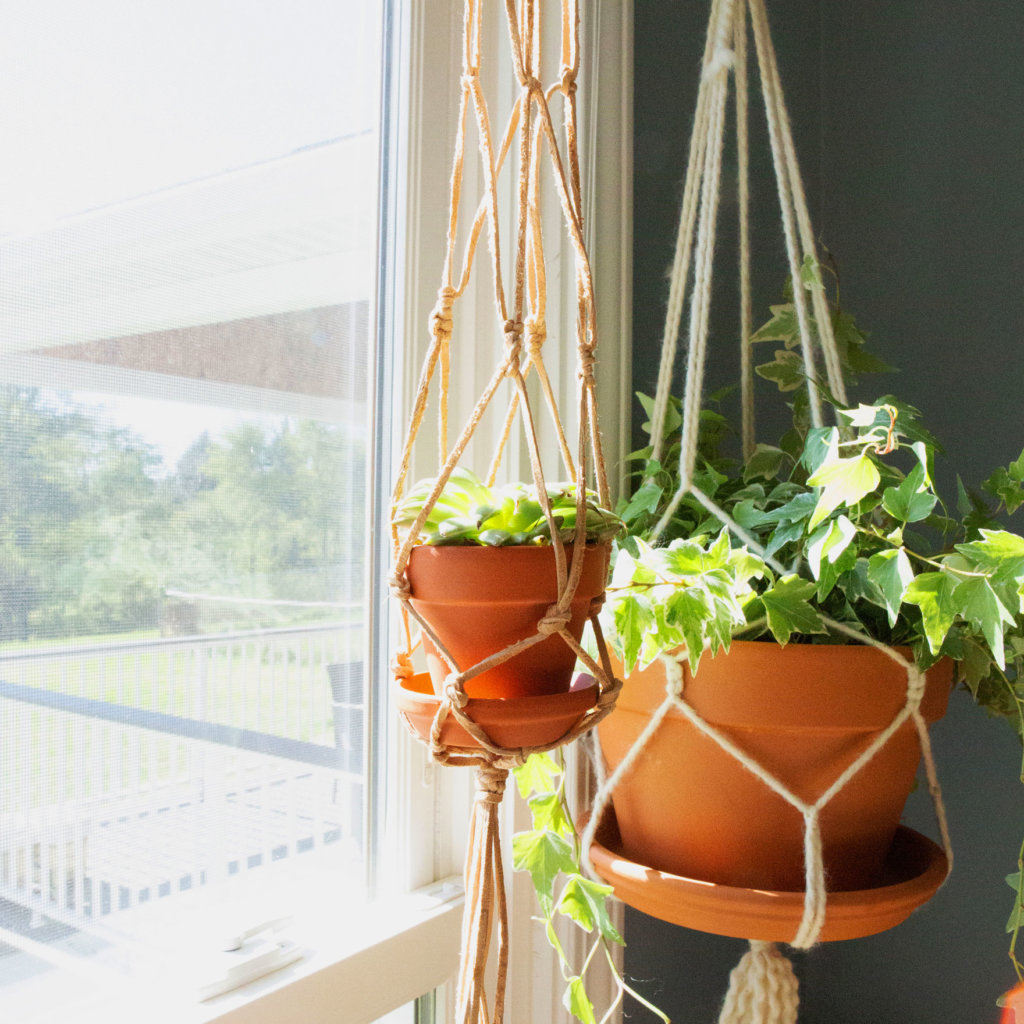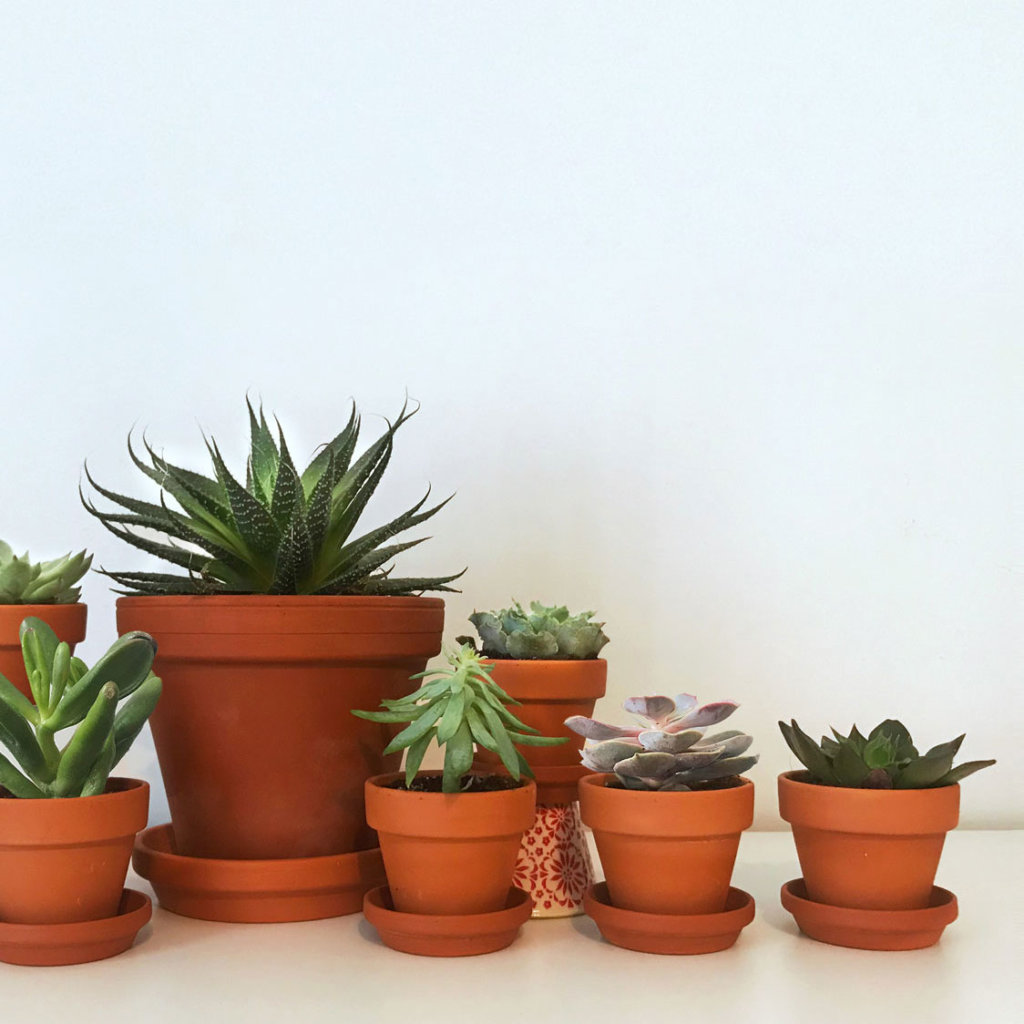Fun, collectible, and available in a huge range of colors and textures—what’s not to love about succulents? Our indoor succulent care tips will help anyone can succeed in growing hardy succulent plants indoors!
Thanks to their resiliency, we think succulents make some of the best houseplants for beginners. Since they aren’t as adaptable as some other plants, the key is to understand their native habitat and try to recreate that in your own home. You’ll be rewarded with plants that are hardy, low-maintenance, and beautiful!
A succulent or semi-succulent plant is one that is capable of storing excess moisture in its leaves, stems, or roots. This allows the plant to survive long periods of drought in its native environment. A few common examples are the Hedgehog Aloe, Ponytail Palm, and String of Pearls. For succulents that are adaptable to low light, check out the Snake Plant and ZZ Plant.
Read our guide to learn the basics of succulent care and discover why they make such great houseplants.
What Types Of Succulents Thrive Indoors?
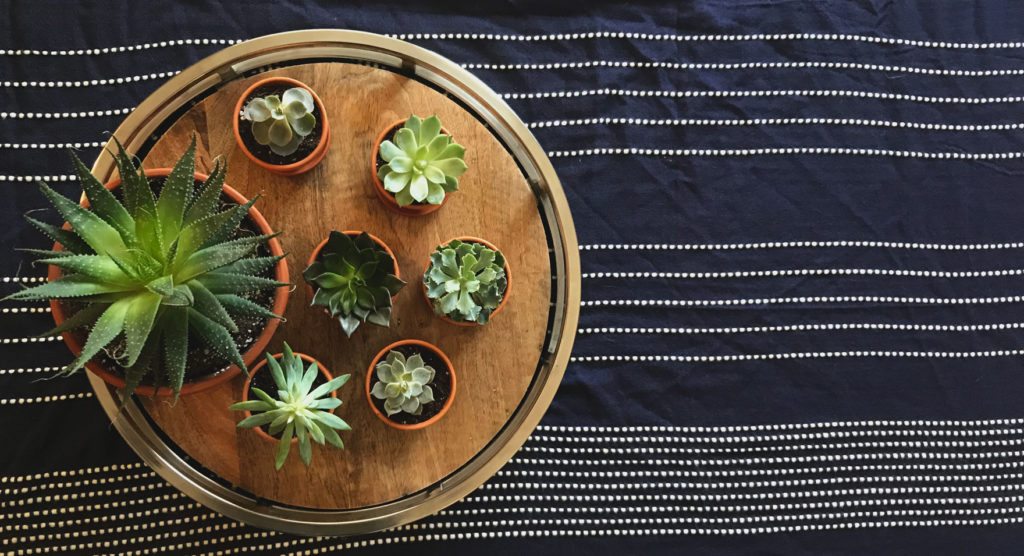
Nearly any succulent can tolerate indoor life under the right conditions. The key is to choose succulents based on where you want to place them—and in particular, how much sunlight that spot gets.
In general, the more direct light, the better for succulents. But here’s a good tip to keep in mind: green succulents tend to be more adaptable to indoor life. This is because they can tolerate the lower light levels found indoors. Colorful succulents, on the other hand, require lots of direct sunlight to maintain their color. Even on a sunny windowsill indoors, they tend to become dull in color or revert to a green hue.
What about succulents in terrariums, you might ask? Terrariums are not ideal for succulents since they have no drainage. What’s more, the airflow in a terrarium is low, making for a very humid environment. While you can succeed with succulents in a terrarium with careful monitoring, you’ll enjoy the carefree aspects of these plants when they are in a less humid spot.
Our Top Indoor Succulent Care Tips
Tip 1: They crave lots of sunshine
In their native habits, succulent-type plants receive lots of direct sunshine—generally, anywhere from 6-12 hours of non-stop sunlight! Since these plants have adapted to soak up the sun, our top succulent care tip to keep in mind is to give your plant as much direct light as possible. A spot on a windowsill or directly next to a window is best. Even better if that window is facing south or west. If placement directly by a window isn’t possible, it’s a good idea to add a grow light to keep your plant at its best.
If you notice the plant growing in the direction of a light source (instead of straight up) or you notice the stem length between leaves increasing, your plant is begging for more light. Other signs the light is too low include leaf drop and the soil remaining wet for too long. The latter issue can lead to fungus gnats, black spots on leaves, stem rot, and overall decline of the plant.
Tip 2: They enjoy only an occasional sip of water
You’ve probably heard that the fastest way to kill a succulent is by overwatering it. To succeed with succulent care, it’s all about the watering frequency. These tough plants have evolved in drought-stricken environments where they must be able to survive long stretches without any water. The very occasional drenching rainfall gives them the moisture they need to persist.
When caring for your indoor succulents, it’s best to mimic these conditions. Allow the soil to dry completely between watering, and don’t be in a rush for your next watering session. When it is time to water, soak the soil completely through until water drips out of the drainage hole. Be sure to dump any excess water that collects in the saucer.
And what about fertilizing? Succulent plants tend to prefer nutrient-poor soil, so feeding with a half-strength fertilizer only once or twice per year is usually enough.
Tip 3: Repotting can revive them
Succulents are made of tough stuff, and repotting them is fairly simple. Regardless, handle them gingerly, and wear gloves if you’re working with plants that have needles or sharp spines!
The roots of these plants can decline quickly if kept too wet, so be sure to use a pot with ample drainage. Clay or terracotta pots are perfect for succulents, since they wick excess moisture through the sides of the pot. Always choose a potting mix that contains large chunks that promote fast drainage.
If you need more repotting guidance, follow our step-by-step instructions for repotting a plant.
Winter Indoor Succulent Care Tips
In most areas of the US, indoor succulents will go dormant over the winter months. Dormancy is a natural period of rest that is triggered by cooler temperatures and shorter days.
- During dormancy, succulents appreciate all the bright light they can get, but don’t expect much new growth.
- Since your succulents won’t be actively growing, they won’t be using much water. This means you should cut back watering your succulents to once every 4-6 weeks in the winter.
- A sure sign your succulent is ready for water is leaves that are slightly wrinkled or puckered.
How To Propagate Succulents
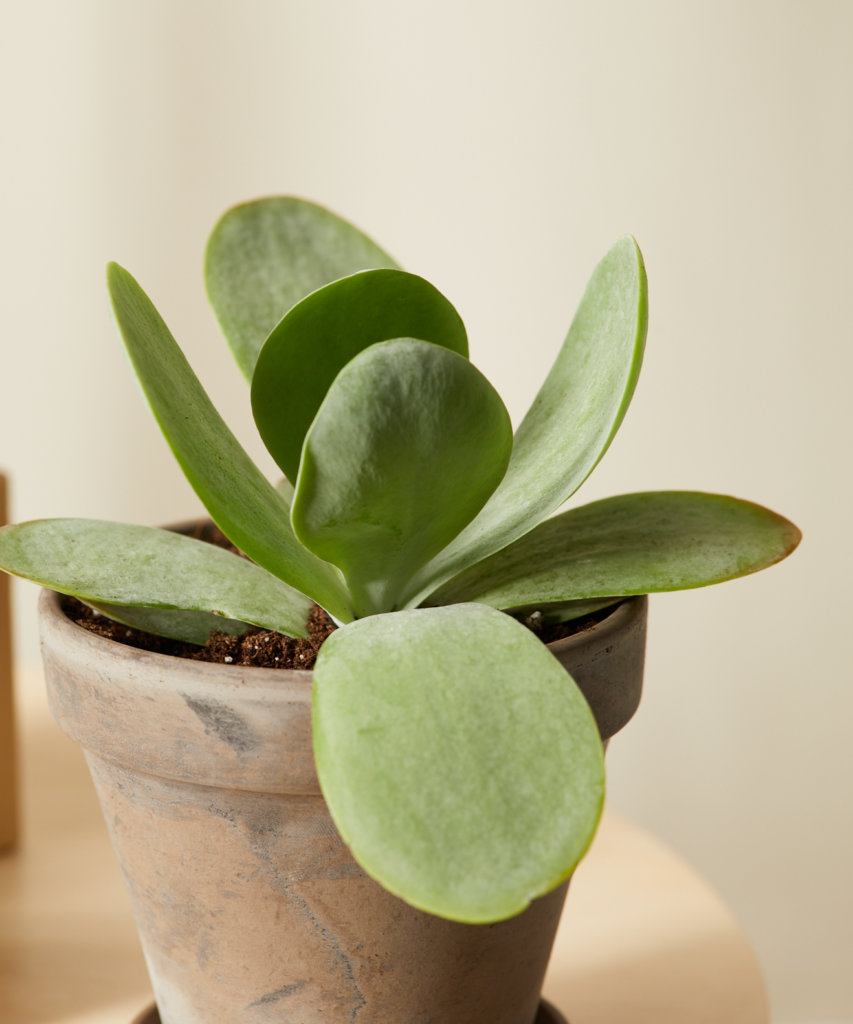
A rewarding aspect of growing succulents is how easy they are to propagate. There is nothing more exciting than watching a piece of a plant turn into a new, baby plant! Two popular methods of propagation for succulents are leaf cuttings (which are much slower) and stem cuttings (which tend to root out pretty quickly). Dividing plants is also a popular method for succulents that develop offshoots at their base.
Read all about how to propagate a plant in this article. We recommend rooting succulents directly in soil rather than water.
Indoor Succulent Care Problems
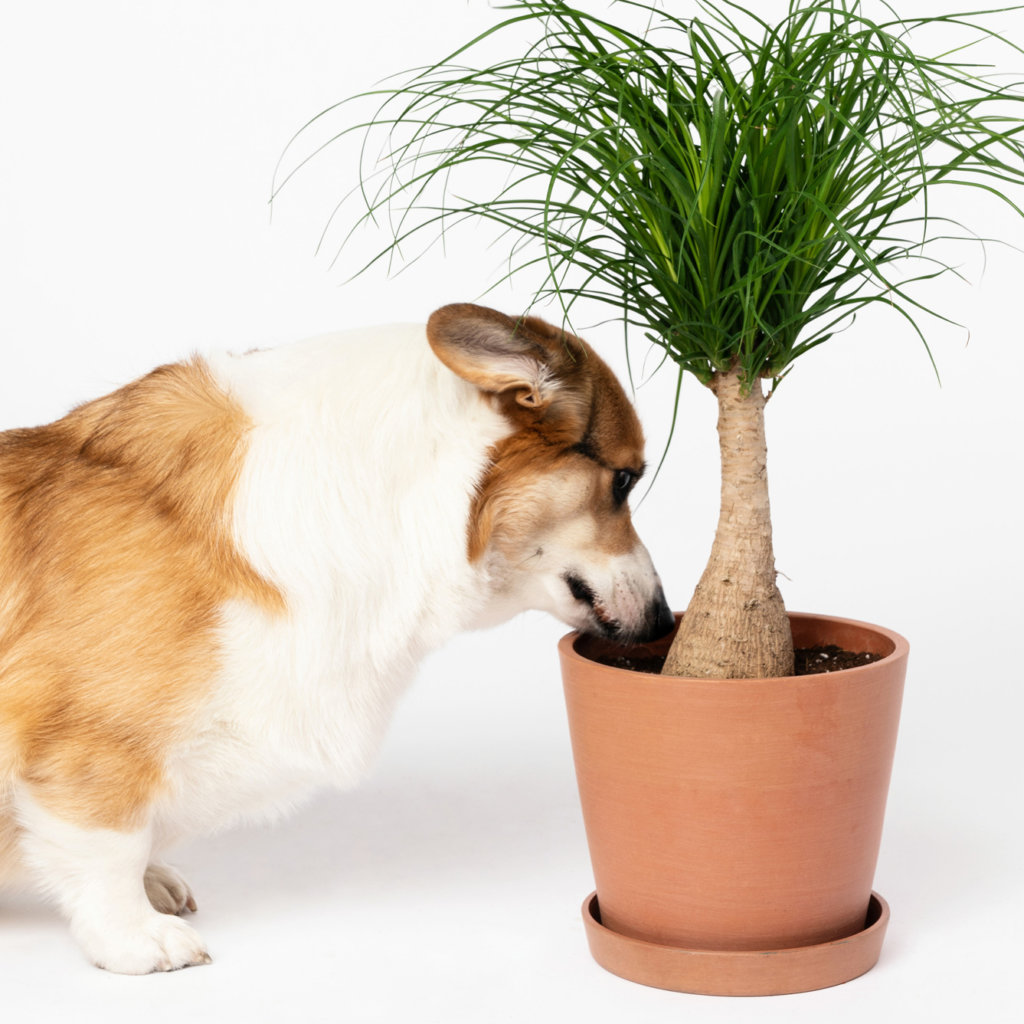
Are your succulents not looking their best? Here are some common issues when caring for indoor succulents:
Some of my succulent leaves are shriveling up. Is it dying?
If the newer, upper leaves are wrinkling or getting dry, then your plant likely needs to be watered more often. In more advanced stages, leaves will completely brown and fall off. Increase your watering frequency and the plant should bounce right back!
If you notice the lowest (and oldest) leaves wilting or browning, this is totally normal. Succulents regularly shed off lower leaves to help promote new growth. It could also be a sign your plant is ready to be repotted, so take a quick peek at the roots. If roots are growing in circles inside the pot, it’s time to repot.
What if my succulent leaves are yellow and soggy?
Yellowing, droopy leaves are a symptom of too much water in the soil. Most often, this is simply due to watering too frequently. It’s a simple fix to cut back on your watering frequency!
Waterlogged soil can also be caused by using a pot without drainage, allowing excess water to collect in the saucer, or by using a water-retaining potting mix. It can also happen when your plant is in a low light environment. Evaluate your plant’s pot, soil, and lighting and adjust if one of these could be the culprit.
What if my succulent’s leaves are turning light brown?
This is usually a sign of sun scorch. Most succulents prefer direct light, however there are a few (like Christmas cactus) that prefer indirect light. Check out your plant’s light preferences in our A-Z Plant Care Guides.
It’s also possible that your sun-loving plant wasn’t properly acclimated to higher light. It’s best to gradually introduce a plant to increased light levels over the course of a week or two. This will eliminate the chance of sun scorch. If it does happen, not to worry! While the affected leaves won’t recover, the plant will grow fresh, new leaves.
